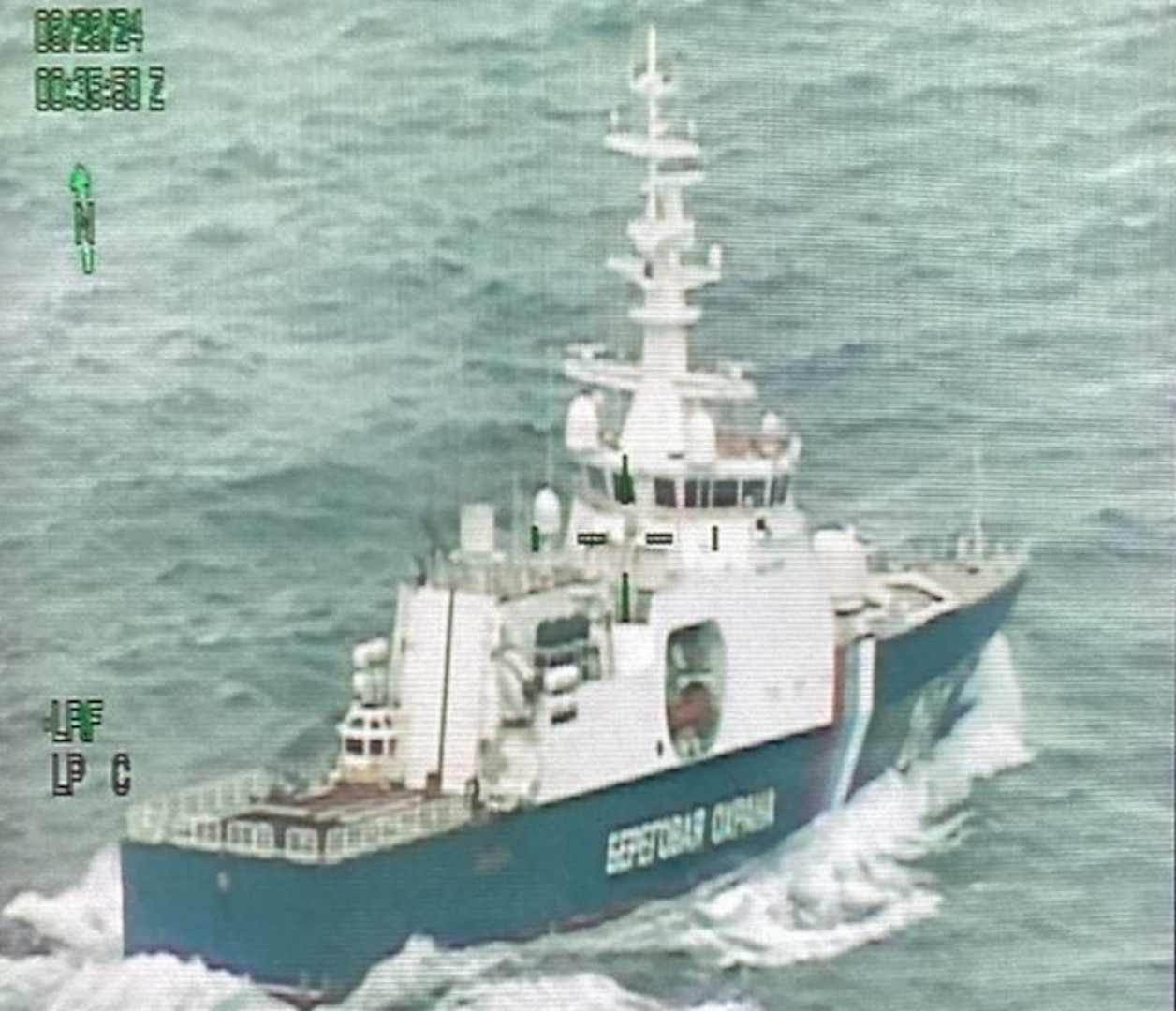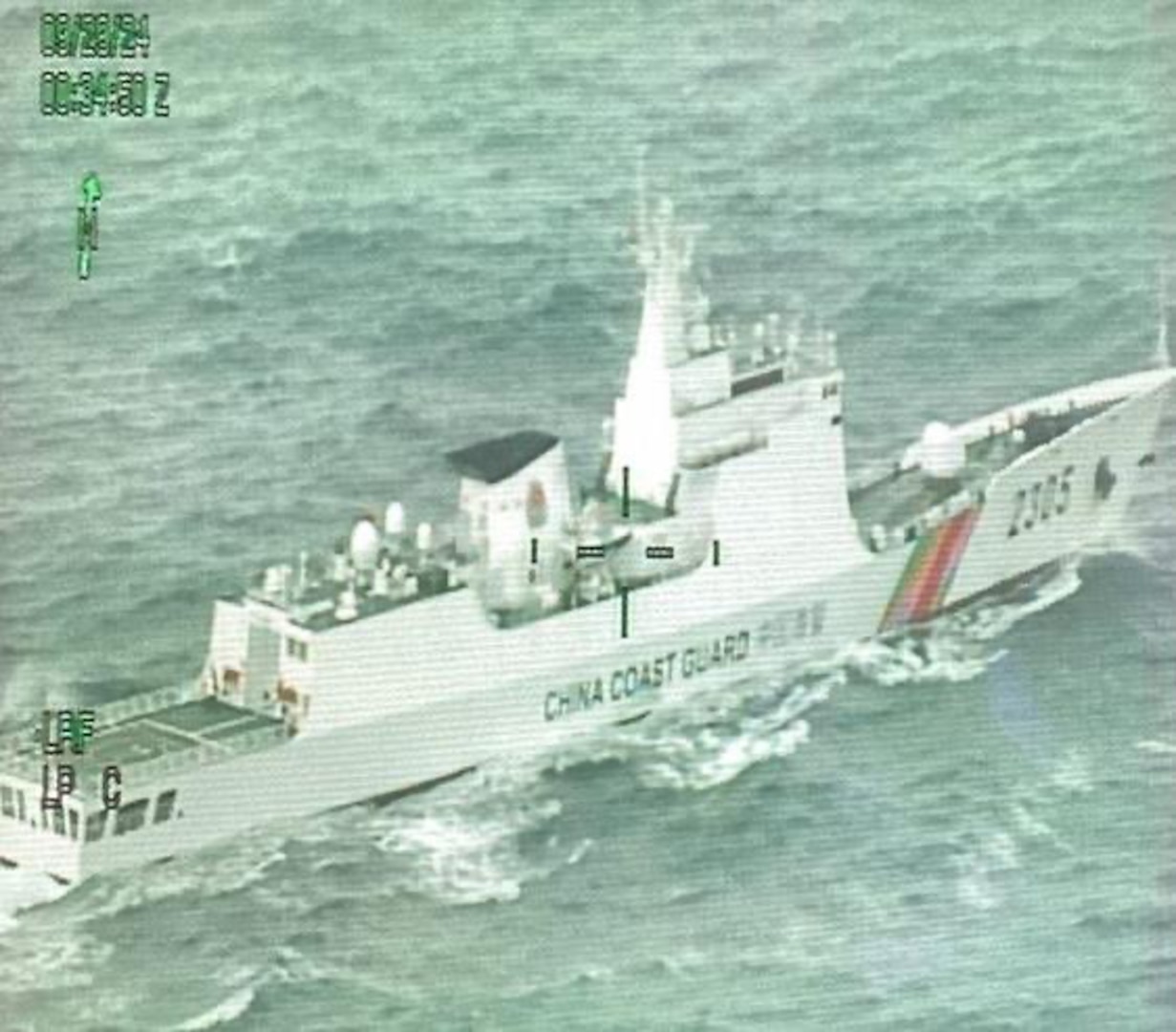On October 1, the US Coast Guard (USCG) reported the sighting of two Russian and two Chinese vessels transiting the Bering Sea in formation, signaling increased military cooperation between Moscow and Beijing in the Arctic region.
The sighting occurred on September 28 during a routine patrol of the maritime boundary between the US and Russia.
According to a USCG press release, an HC-130J Super Hercules airplane crew from Coast Guard Air Station Kodiak observed the four vessels — two Russian Border Guard ships and two Chinese Coast Guard ships — approximately 440 miles southwest of St. Lawrence Island.
The ships were moving northeast, five miles within the Russian Exclusive Economic Zone (EEZ).
This was a significant finding, as it was the northernmost location where US forces have spotted Chinese Coast Guard vessels in the Bering Sea, the body of water between Russia and Alaska.

“This recent activity demonstrates the increased interest in the Arctic by our strategic competitors,” said Rear Adm. Megan Dean, Commander of the 17th Coast Guard District.
“The demand for Coast Guard services across the region continues to grow, requiring continuous investment in our capabilities to meet our strategic competitors’ presence and fulfill our statutory missions across an expanding operational area,” Rear Adm. Megan Dean added.
The US Coast Guard HC-130 aircrew was operating under Operation Frontier Sentinel, a mission aimed to maintain a visible US presence when strategic competitors operate near American waters.
According to the USCG, the move was crucial to reinforce the international rules-based order and ensure that operations adhere to established international laws and norms.
The recent sighting follows earlier military maneuvers. In September, the Pentagon reported that a Russian naval task force, comprising a tug, a frigate, two submarines, and eight military aircraft, had come close to Alaska.
Those maneuvers were part of the “Ocean-24” naval exercise, one of Russia’s most extensive military drills in recent history. While the task force temporarily entered the US exclusive economic zone, it remained compliant with international law, as noted by the cutter USCGC Stratton, which monitored their movements.
Earlier in July, the USCGC Alex Haley encountered a Russian naval vessel near Amukta Pass, and Chinese warships were sighted north of the Aleutians.
Chinese Coast Guard Expands Reach With First Arctic Patrol
On October 2, Chinese state media reported that a fleet of Chinese coast guard vessels had entered the Arctic Sea for the first time to conduct a joint patrol with their Russian counterparts.
State media reported that the arrival of the ship “Meishan” on October 1 coincided with two key anniversaries: the 75th anniversary of the founding of the People’s Republic of China and the 75th anniversary of diplomatic relations between China and Russia.
This event highlights the growing maritime cooperation between the two nations in the strategically important Arctic region.
The CCG explained that this “significantly expanded” its operational range in the Arctic, allowing its vessels to operate in unfamiliar maritime environments.
The patrols also tested the CCG’s ability to perform critical missions, enhancing its involvement in both international and regional maritime governance, the CCG said in a statement.
This development follows a series of joint patrols conducted by the two nations in the northern Pacific Ocean, which began on September 21.
The Chinese Coast Guard said that the exercises demonstrated the strong collaborative capabilities between the two coast guards, further deepening their maritime partnership.
The event reflects the growing complexity of the maritime environment in the Arctic, with Russia and China expanding their naval strengths and solidifying their presence in critical waters.
With the Arctic ice receding due to global warming, access to shipping lanes and fossil fuel resources has expanded, turning the polar region into a focal point for both countries.
A US report earlier pointed out that Russia has been intensifying its military presence in the Arctic in recent years, reopening and modernizing several bases and airfields abandoned since the collapse of the Soviet Union.
At the same time, China has invested heavily in Arctic exploration and research as part of its initiative to develop a “Polar Silk Road” that could secure future trade routes and resource access in the region.
Russia and China have been collaborating to establish Arctic shipping routes: Russia has been seeking to deliver more oil and gas to China amid Western sanctions even as China has been diversifying its shipping lanes and reducing its reliance on the heavily trafficked Strait of Malacca.

Although Russia and China still have significant differences, their growing cooperation in the Arctic has raised concerns for the US Department of Defense. In July, Russian and Chinese bombers conducted joint flights for the first time in international airspace off the coast of Alaska.
While the flights did not pose an immediate threat, they marked the first instance of Chinese bombers entering the Alaskan air defense identification zone and the first joint takeoff of Chinese and Russian aircraft from the same base in northern Russia.
Moreover, military experts and security analysts have noted that China’s dependence on shipping routes in the Indian Ocean represented a strategic weakness, particularly in a potential conflict over Taiwan, leading Beijing to consider alternative options such as Arctic routes.
The Pentagon further stated that China was exploiting the shifting dynamics in the Arctic to enhance its influence, gain access to Arctic resources, and assume a larger role in regional governance.
Despite these developments, Russia has maintained that its cooperation with China in the Arctic is not intended to challenge or threaten any other nation.
Moscow dismissed US criticism as misplaced and confrontational, asserting that its activities in the Arctic were focused on promoting stability in the region.
- Contact the author at ashishmichel(at)gmail.com
- Follow EurAsian Times on Google News




